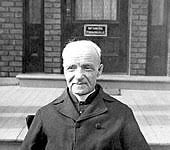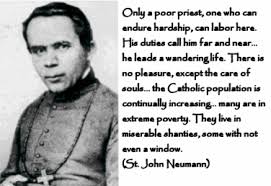At the celebration of the Holy Sacrifice of the Mass, we begin with the call to repentance and to a reflective manner of life is issued in what is called the Penitential Rite. The most common form of this rite is what we call the Confiteor or the I Confess. The Confiteor is the traditional formula for confessing our sins in which we acknowledge sins of commission and sins of omission; and in which we also call upon Our Lady the Mother of mercy and the angels and the saints to intercede on our behalf in our struggle with sin. St. John reminds us that “if we say we have no sin, we deceive ourselves” (1 Jn 1:8). Our Lord taught us the importance of humility and of acknowledging our sinfulness in the parable of the Pharisee and the Publican. The fact is that God cannot forgive us if we are not sorry and the necessary sorrow for ours sins is called contrition, which comes from the Latin conterere, meaning to break. Thus as we recite the Confiteor, we strike our breast three times: through my fault, through my fault, through my most grievous fault—as if to break our stony hearts. The oldest of the teachings of the early Church Fathers, called the Didache or The Teachings of the Twelve Apostles, stressed the importance of confessing our sins before participating in the Eucharistic Sacrifice: “But every Lord’s day gather yourselves together, and break bread, and give thanksgiving after having confessed your transgression, that your sacrifice may be pure.”
In the Traditional Rite of the Mass or the Tridentine Mass as it is known, having confessed his sins outside the sanctuary, the priest then ascends the Altar steps and as he does he says quietly this beautiful prayer: “Take away from us our iniquities, we beseech Thee, O Lord, that with pure minds we may worthily enter into the holy of holies. Through Christ our Lord. Amen.” The Sanctuary where the sacred mysteries are celebrated is likened to the Holy of Holies in the Temple in Jerusalem. The Holy of Holies was where the Ark of the Covenant was kept and no one could pass through the veil except the High Priest, and then only once a year, on the Day of Atonement—after specially preparing himself for six days through rites of purification.
On Good Friday, at the ninth hour when Our Lord died, the veil which separated the Holy of Holies from the rest of the Temple was torn in two, signifying that the New Covenant in Jesus’ Blood had replaced the old. Through His saving Sacrifice we have gained access to the Father. As we read in the Epistle to the Hebrews, “since then we have a great high priest who has passed through the heavens, Jesus, the Son of God, let us hold fast our confession. … Let us then with confidence draw near to the throne of grace, that we may receive mercy and find grace to help in time of need” (4:14-16).
The communal confession of sin which begins the celebration of every Mass is a confident affirmation of our trust in the merciful love of God that endures forever. It is no less a reminder of our constant need to repent and to be renewed so that we might reflect the goodness and love of our Saviour. Our threefold plea for mercy: Kyrie eleison, Christe eleison, Kyrie eleison—disposes our hearts and minds to praise the most Holy Trinity in the Gloria, a Great Doxology, the hymn of praise that gives voice to the four ends of sacrifice: adoration, atonement, thanksgiving, and petition.
This then is the first of our meditations on the Holy Sacrifice of the Mass. It is Christ our Lord Himself whom we see and hear in the celebration of the sacred mysteries. Following Christ is the greatest good for men; history clearly illustrates the truth of this statement. The first step along this path is always repentance and this first step sets the tone, as it were, for the path of our devout discipleship; a life of union with Jesus through grace, love, and imitation. The lives of the saints, especially those who experienced a dramatic conversion from a life of sin, are sufficient proof of the value of repentance. “Therefore, since we are surrounded by so great a cloud of witnesses, let us also lay aside every weight, and sin which clings so closely, and let us run with perseverance the race that is set before us, looking to Jesus the pioneer and perfector of our faith” (Heb 12: 1-2).
In the Traditional Rite of the Mass, having entered the Sanctuary, our Holy of Holies, the priest kisses the Altar and says this prayer which acknowledges our participation in the communion of saints: “We beseech Thee, O Lord, by the merits of Thy saints whose relics are here, and of all the saints, that Thou wouldst vouchsafe to forgive me all my sins.” Amen. So we pray; that our sacrifice may be pure.










